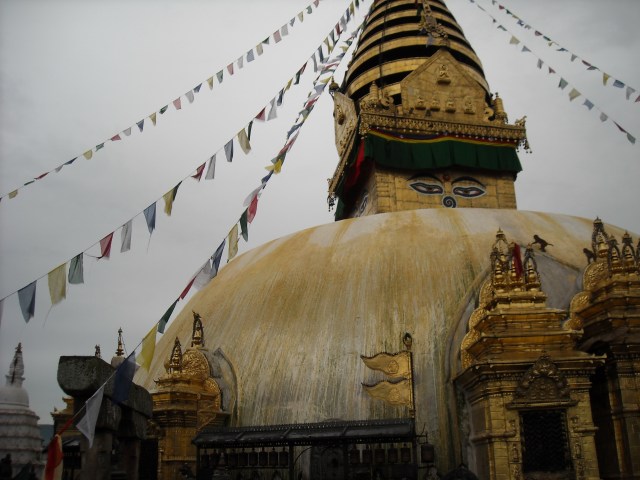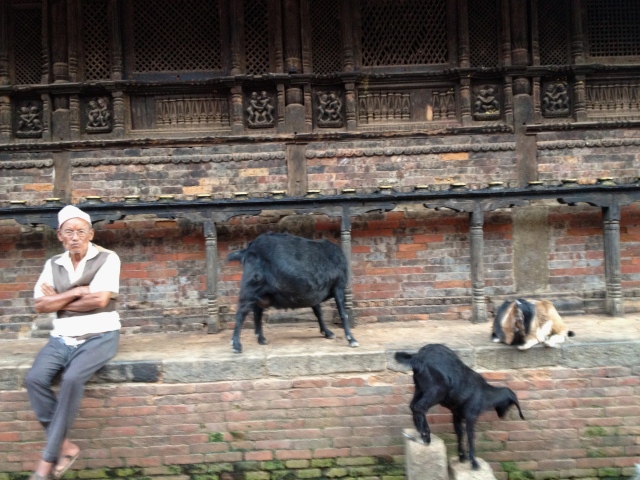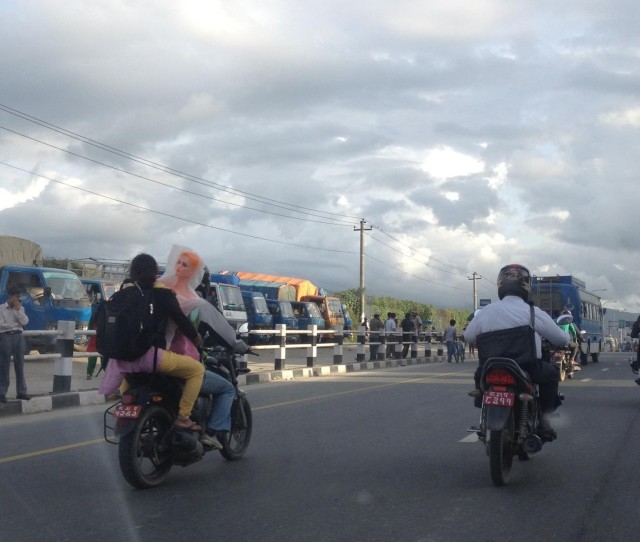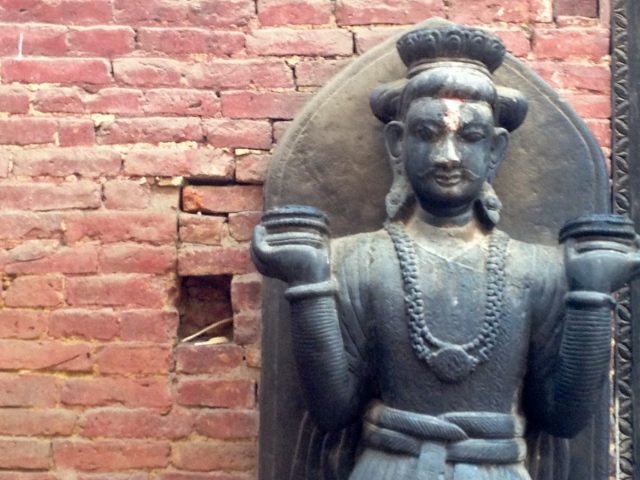
When I arrived in Kathmandu in mid-September, I was surprised to find that it was still the monsoon season. (Truthfully, up until a few years ago, I would never have guessed that this landlocked, mountainous country even HAD a rainy season.) In Kathmandu, the hot and wet monsoon season is in the summer – usually between June and August. This year, however, it lingered into the third week of September. I asked numerous Nepalis if this extended monsoon season was a common occurrence and I always got the same response. “No, it is not common. This is the result of global warming.”
After several days of slogging about in the steady rain, I resigned myself to the fact that monsoon season might outlast my visit to Nepal. But unlike my previous visits, which had been during the dry season in winter, I marveled that everything was so beautifully and luxuriantly verdant. Much of the green could be attributed to the rice paddies that were everywhere, even tucked into vacant lots in the suburbs of Kathmandu. It was time for the rice to be harvested, but it was impossible to do so in the rain.
Suddenly one evening, near sunset, there was a change. The dense clouds, which had hung low and heavy over the city, suddenly began to lift and separate, like cotton candy being pulled apart by unseen hands. Watching the Kathmandu skyline, I realized that what I had thought was just another cloudbank was in reality the snow-covered Himalayas that ring the city! “Ah,” said a Nepali at the TEWA Centre where I was staying in Lalitpur, “the seasons are finally changing.”
The seasons are changing for the city of Kathmandu, as well. In the photo above , you can see the many housing construction projects being built in this area on the outskirts of the city. The Kathmandu population grew during the conflict as internally displaced persons fled the Maoist rebels in the countryside. The population has continued to grow due to the country’s high unemployment. People come to the capital looking for work. There are now 3 million people living in the Kathmandu valley, driving too many cars and motorcycles on streets that were designed for oxcarts. Traffic is a huge problem, making it difficult to get anywhere. The air is polluted and many people wear masks over their lower faces. Traffic accidents are common. Many Nepalis ride motorcycles as they are cheaper than cars and easier to maneuver in traffic. From goats to refrigerators, you never know what you might see people carrying on one!
Nepal is peaceful now. The violence has ended and the Maoists have been in a power-sharing coalition government since 2008. But the coalition government is gridlocked. In May 2012, Nepal’s political parties failed to reach an agreement on a new constitution before the deadline. (Nepalis have been waiting more than four years for a new constitution. When the committee drafting the constitution gets paid by the month, where is the incentive to finish the job?) The Constituent Assembly, the members of which had been serving under extensions after their terms expired in 2010, was dissolved, creating a political crisis. Most of the basic civic and municipal functions have now essentially ground to a halt.
President Ram Baran Yadav of Nepal gave the parties a deadline of November 29, 2012 to come up with an agreement on how the (long overdue) elections should be conducted. When they failed to meet that deadline, he extended it for one more week.
Nepalis are still waiting for the political season to change. In the meantime, much of daily life goes on as it has for centuries.




Here’s hoping that the sun comes out soon for Nepal’s political situation.

For more about life in Kathmandu, read my post on Family Life in Kathmandu.
This post is a contribution to the Weekly Photo Challenge: Changing Seasons. Too see more contributions, click here.



Interesting to see a bit of what goes on in this city I have never visited. Enjoyed looking at your photos.
LikeLike
Thanks for your comment, Colline! I think Kathmandu has changed a lot in the past 10-20 years. Still, it is an interesting place to visit. So many people just pass through on their way to go trekking and stay in the only touristy part of the city. I’m so thankful to get a peek into what real life is like. Best wishes!
LikeLike
Love your photos of Nepal and thoroughly enjoy reading your blog.
LikeLike
Thanks so much, Jenny! I’ve got Morocco, Cameroon, Tanzania and more travel teed up for 2013! (Hope you got some x-country skiing in today!)
LikeLike
I especially like these pictures, Jennifer. One of my best friends lives in Kathmandu & I will have to tell him to check out your pictures!
LikeLike
Thanks Michele! Most of these pictures were taken with my iPhone, so they really don’t do justice to the beauty of this part of the world. Thanks for your comment and best wishes!
LikeLike
Very nice.
LikeLike
Thank you!
LikeLike
I was a Peace Corps Volunteer in Nepal in the mid 1980’s. Your beautiful photos and blog brought back memories. Thank you and I do hope that things are indeed better there.
LikeLike
Hi Tamara! Did you hear that the first Peace Corps class since the conflict recently arrived in Nepal? Another sign of progress, I think. I’d love to hear your reflections about your time in Nepal in the 80s – I hope you will write about it on your blog if you haven’t already. Thanks and best wishes!
LikeLike
Unforgettable Kathmandu!
LikeLike
Precisely! Thanks for your comment, Stefano!
LikeLike
What a super set of photos that give us a taste of a country that is very different and & long way away
LikeLike
Thanks! Nepal is a fascinating place. The pictures don’t really do it justice. Thanks for your comment.
LikeLike
Looks as if the clouds and the snow on the mountains have become one in the first picture. So lovely.
LikeLike
I know! I thought they were clouds! You see the Himalayas when you fly into KTM, but it is really an unbelievable sight to see them from the city when the clouds lift. Thanks for your comment!
LikeLike